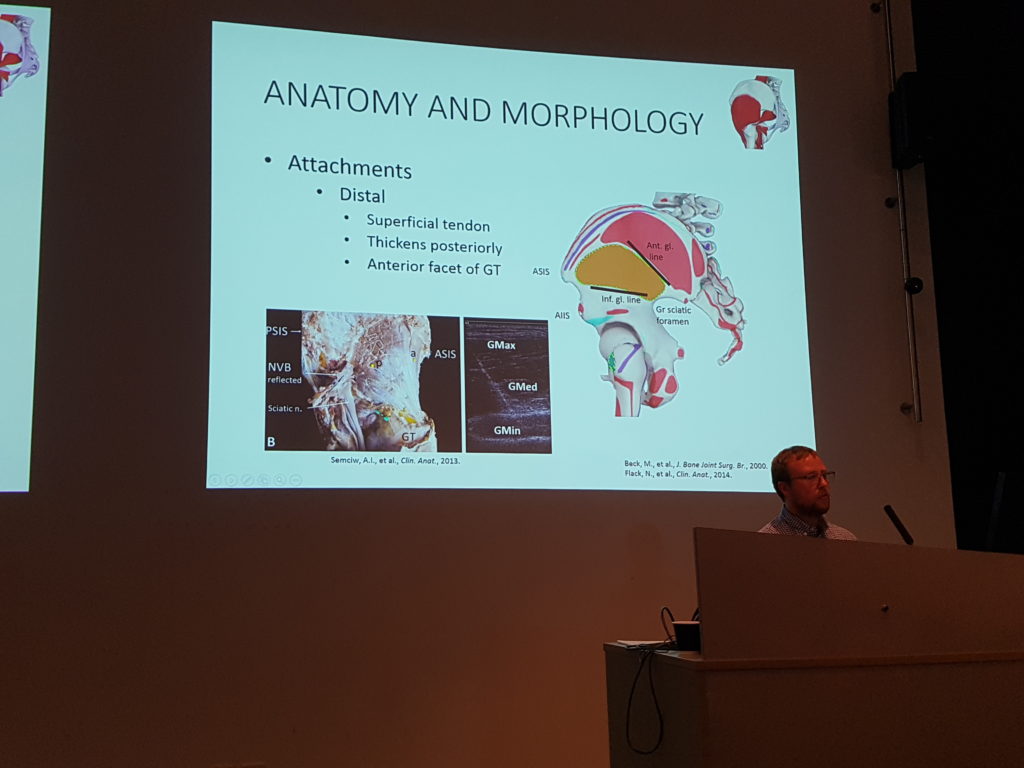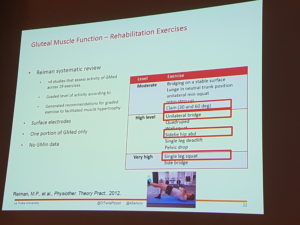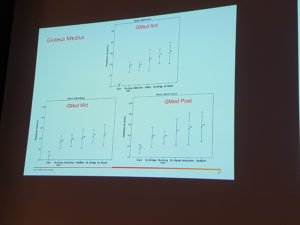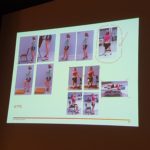 “A lot of common exercises don’t provide the level of activity we think we would need for muscle hypertrophy.” – Adam Semciw (26.8.16).
“A lot of common exercises don’t provide the level of activity we think we would need for muscle hypertrophy.” – Adam Semciw (26.8.16).
More than 100 people turned out to La Trobe Sport and Exercise Medicine Research Centre’s Hip and Groin Symposium on Friday August 26.
I had the pleasure of speaking to a few of the speakers after their presentations. So if you missed out on the Symposium, this series will help fill you in on what we all learned.
In Part 1, Dr Adam Semciw provides fantastic insight into the importance of the gluteal muscles to injury and how best to strengthen them during rehabilitation:
Dr Semciw started his presentation by encouraging physiotherapists and researchers to consider each of the three gluteal muscles (minimus, maximus and medius) individually during assessment and exercise prescription. Physiotherapists often focus a lot on gluteus medius and gluteus maximus when prescribing exercises. However, in relation to injury and pathology, “one that really stands out is glute min (gluteus minimus)” Dr Semciw says.
“We know that glute min (not only) reduces in muscle size, but also gets a lot of fatty infiltrate as well, in conditions such as hip osteoarthritis, following total hip replacement, lateral hip pain, and as we age.”

Dr Semciw then discussed the importance of also considering the divisions within each of the three gluteal muscles. He outlined emerging research highlighting the importance of these divisions to pathology and exercise rehabilitation.
“We know glute min is divided into segments. It has anterior and posterior structurally unique and functionally unique segments. Of those anterior glute min tends to atrophy and get fatty infiltrate more so than posterior.”
Dr Semiciw suggests these divisions may be particularly important during design of rehabilitation programs.
“If there was an avenue for targeted rehab in a lot of these conditions, certainly anterior glute min might be a component we could look into.”

Are common exercises likely to be effective at improving gluteal strength?
The important next step in Dr Semciw’s work has been to identify how well exercises commonly prescribed by physiotherapists activate key gluteal muscles and their relevant divisions (e.g. anterior gluteus minimus).
Dr Semciw says ‘the clam’ exercise is one of the most common exercises physiotherapists prescribe. It has been reported in previous research to lead to moderate levels of gluteus medius activity. However, this research is limited since it only evaluates one portion of the muscle.

More recently, Dr Semciw has been investigating how much activation of other portions of gluteus medius, and the the gluteus minimus occurs during ‘the clam’ and other common exercises.
“We did a study looking at common rehab exercises.” These exercises generally produced less than the minimum 40% maximal activity in the different divisions of gluteus medius Dr Semciw says. The 40% cut off is of importance, since this is the level of activity believed to required during exercise to improve muscle strength.

For anterior gluteus minimus, which appears to be a key muscle division in a range of pathologies, the findings were even more important. “We weren’t getting too much activity in anterior glute min for exercises such as ‘(the) clam’, single legged squat, bridge, and so on” Dr Semciw says. The ranges of activity across the various exercises tended to be closer to 20% of maximal contraction, and in some cases much lower.
How should we strengthen key gluteal muscles such as gluteus minimus?
Dr Semciw says “the exercises we were getting most activity in (the gluteal muscles) were exercises where you are in a single leg standing position with resisted extension abduction.” He encouraged people to consider using theraband to facilitate the required resistance.

I look forward to seeing more of Dr Semciw’s work soon. Stay tuned for more symposium synopsis next week.
Follow: @ASemciw
Join our Facebook group to stay up to date:


